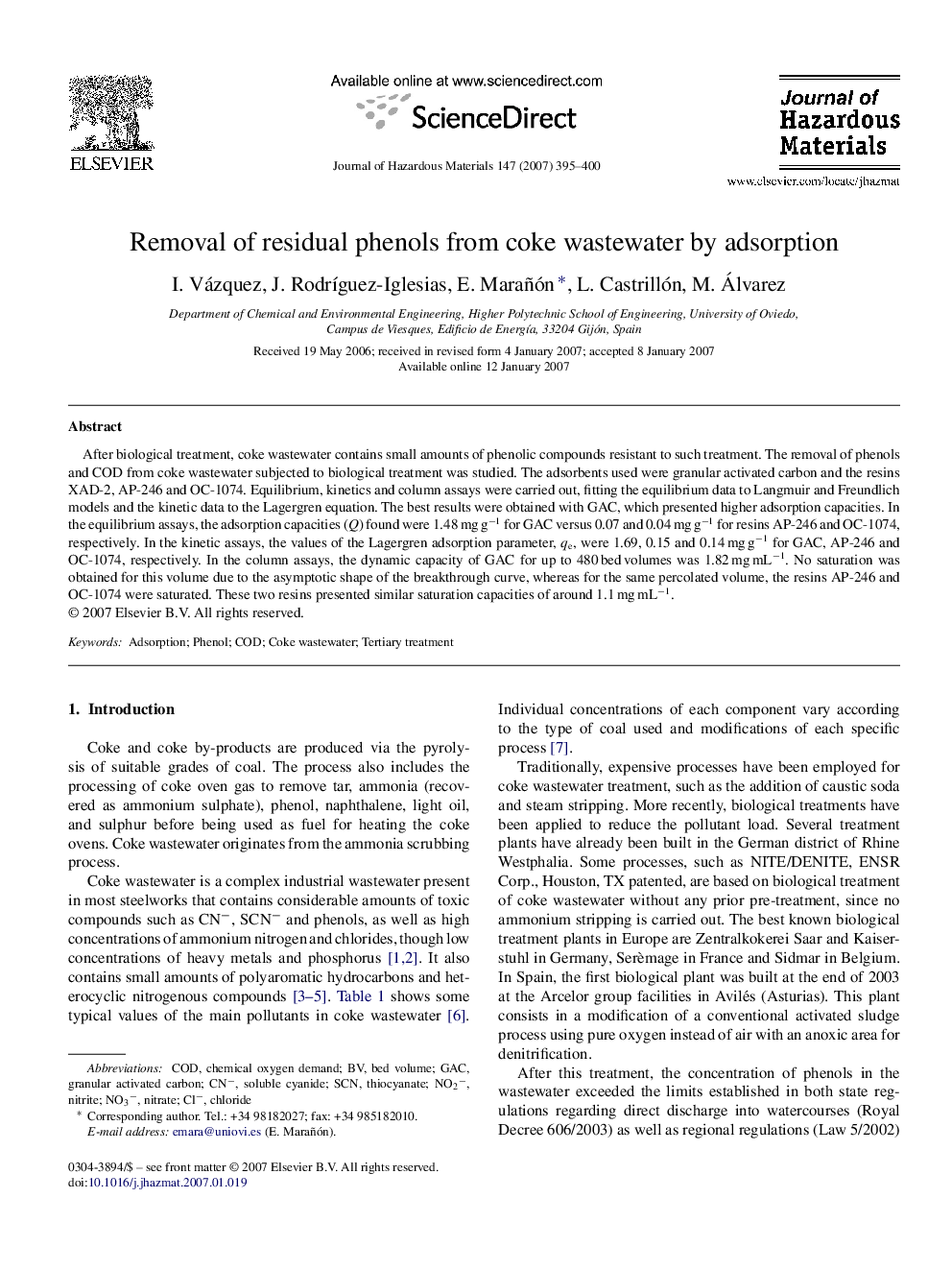| Article ID | Journal | Published Year | Pages | File Type |
|---|---|---|---|---|
| 584132 | Journal of Hazardous Materials | 2007 | 6 Pages |
Abstract
After biological treatment, coke wastewater contains small amounts of phenolic compounds resistant to such treatment. The removal of phenols and COD from coke wastewater subjected to biological treatment was studied. The adsorbents used were granular activated carbon and the resins XAD-2, AP-246 and OC-1074. Equilibrium, kinetics and column assays were carried out, fitting the equilibrium data to Langmuir and Freundlich models and the kinetic data to the Lagergren equation. The best results were obtained with GAC, which presented higher adsorption capacities. In the equilibrium assays, the adsorption capacities (Q) found were 1.48 mg gâ1 for GAC versus 0.07 and 0.04 mg gâ1 for resins AP-246 and OC-1074, respectively. In the kinetic assays, the values of the Lagergren adsorption parameter, qe, were 1.69, 0.15 and 0.14 mg gâ1 for GAC, AP-246 and OC-1074, respectively. In the column assays, the dynamic capacity of GAC for up to 480 bed volumes was 1.82 mg mLâ1. No saturation was obtained for this volume due to the asymptotic shape of the breakthrough curve, whereas for the same percolated volume, the resins AP-246 and OC-1074 were saturated. These two resins presented similar saturation capacities of around 1.1 mg mLâ1.
Keywords
Related Topics
Physical Sciences and Engineering
Chemical Engineering
Chemical Health and Safety
Authors
I. Vázquez, J. RodrÃguez-Iglesias, E. Marañón, L. Castrillón, M. Álvarez,
